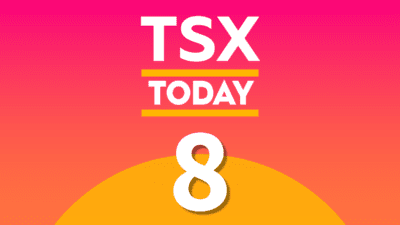Statistics Canada released its latest inflation numbers this morning. The official rate of annual inflation has soared from 4.8% to 5.1%. That’s the highest rate since 1991. The cost of living continues to outpace income growth and even the returns on the stock market.
Here’s why investors need to monitor this issue closely and how you can protect yourself from this inflationary wave.
Invisible tax
Inflation is an invisible tax on your assets and income. For instance, the S&P/TSX Composite Index is up 4.9% over the past six months. This year, the pace of growth has slowed down. This means there’s a chance that inflation completely offsets all capital gains in 2022.
Meanwhile, the rate is also higher than the stock market’s average dividend rate. Most blue-chip telecom and bank stocks offer dividend yields in the 2-5% range. That’s not enough to outpace inflation.
Put simply, if you’re a passive investor betting on an exchange-traded fund that tracks the broader stock market, your wealth is being eroded this year. To avoid this, you may need to switch your strategy. Moving funds to another sector or theme could help you retain wealth or even make money this year.
Best ETFs to fight inflation
Some experts are worried that the cost of living is likely to keep rising at this pace for the foreseeable future. The global economy is still reopening, while supply chains remain constrained. Most importantly, the central bank has kept interest rates at record lows while deploying more cash into the system to stimulate it.
Under such circumstances, investors may need to move some of their assets to inflation hedges. iShares S&P/TSX Capped Energy Index ETF (TSX:XEG) is a good pick. The fund holds Canada’s largest oil and gas producers. Energy stocks have been on an epic run over the past year. This trend could continue in 2022 since energy costs are a critical component of inflation.
XEG holds 22 oil and gas producers, including Suncor and Cenovus. The trailing yield is 1.3% while the fund’s holdings trade at a price-to-book value of 1.9. Year to date, this ETF is up 22.2% — far higher than the rest of the stock market and better than most tech stocks.
Another potential inflation hedge is iShares S&P/TSX Global Base Metals Index ETF (TSX:XBM). Base metals such as iron ore, coal, and lithium have all been skyrocketing alongside crude oil. These metals are an essential part of the global economy, and they’re all suffering supply shortages at the moment.
In 2022, demand for these metals could remain strong, as the global economy picks up steam. Construction, manufacturing and home building will keep a floor on metal prices. This ETF could act as an inflation hedge when supply fails to meet demand.
Year to date, XBM is up 14.2%, which is far higher than the 5.1% surge in the cost of living.
Bottom line
Canada’s inflation rate spiked to 5.1% — the highest rate since 1991. Investors could bet on energy and metal ETFs to protect their assets during this wave of cost pressure.








